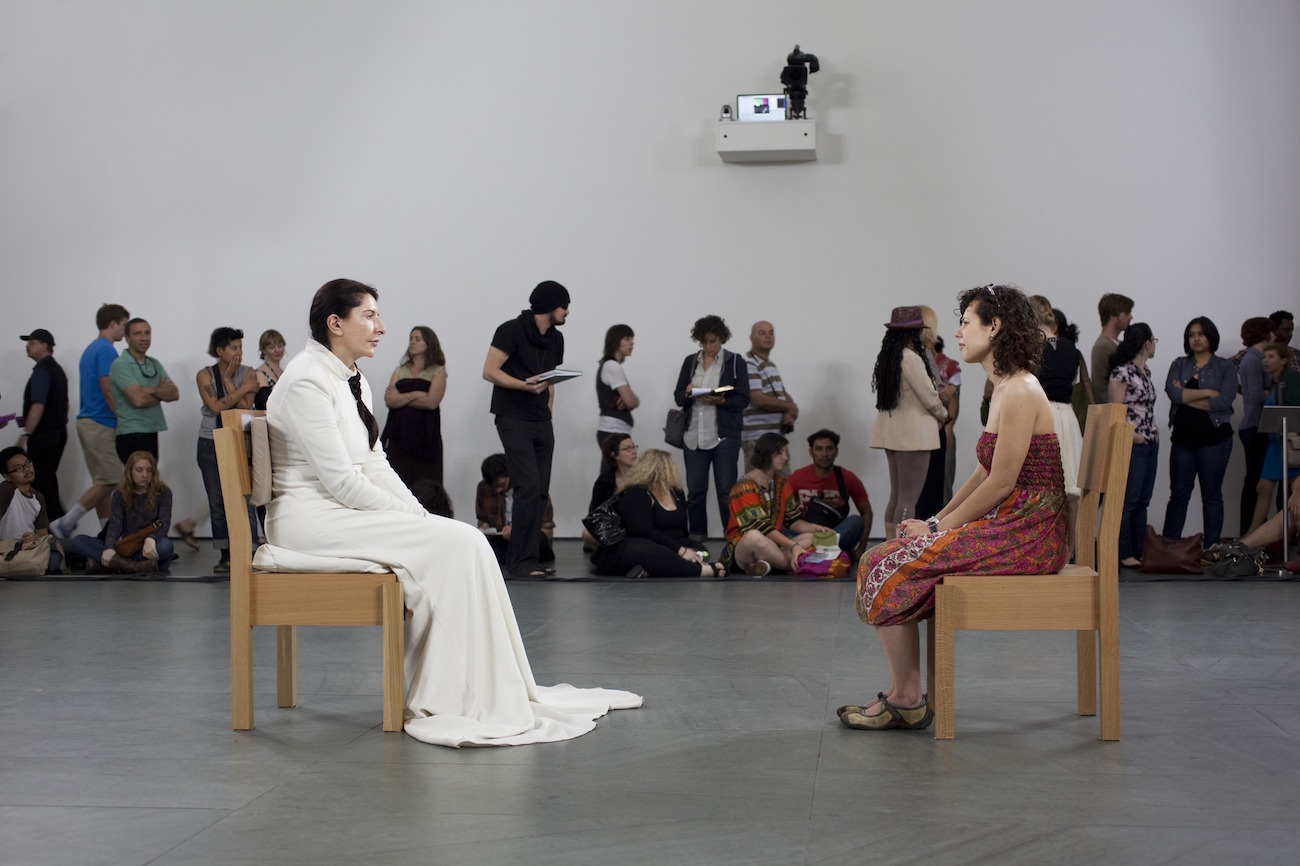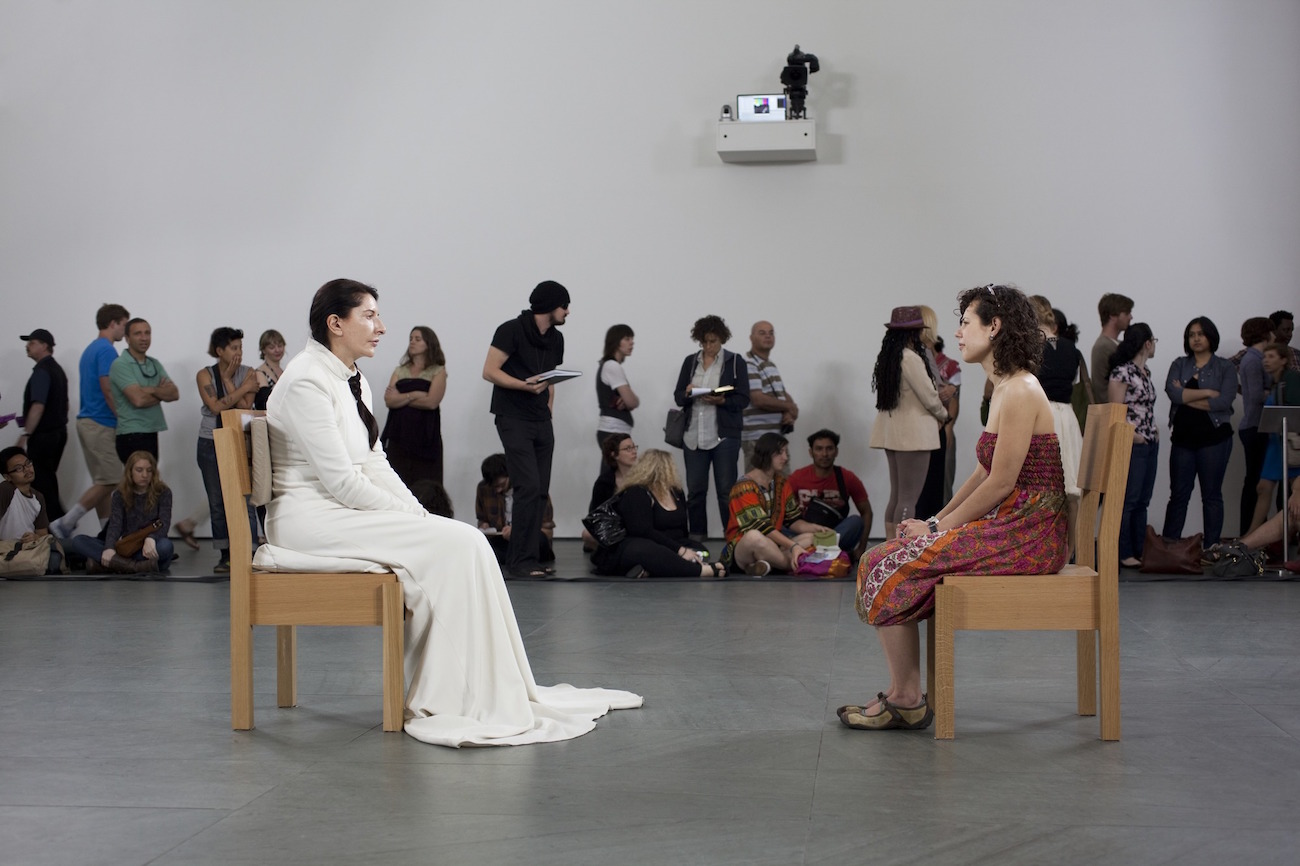[ad_1]

Marina Abramović in “The Artist Is Present.”
JONATHAN MUZIKAR
As the newly refashioned Museum of Modern Art opens in New York, ARTnews looks back on some notable happenings from the institution’s history in a series of reminiscences of storied “MoMA Lore.”
After it had earned no meager notoriety for the gumption that went into having an artist simply sit still and stare into other people’s eyes for more than 700 hours—plus staging accompanying performance works that asked museumgoers to walk through a narrow doorway between two naked bodies—Marina Abramović’s hallmark 2010 MoMA survey, “The Artist Is Present,” went in for a bit more on its final day.
That morning, after waiting for 31 hours to be the first to sit across from the artist for a round of one-on-one communion (and/or a stare-down), a woman named Josephine Decker found her experience with Abramović short-lived when, after taking off her dress, she was encircled by museum guards and whisked away.
As Decker chronicled in an essay titled “Why Does MoMA Hate My Body?” (published first in the dearly departed New York Press and then in a shorter version still available to read at HuffPost), “When I walked into the MoMA’s square of light and took off my dress, seven guards surrounded me, forced me to put the dress back on, and escorted me from the building with the promise that I would be arrested if I returned.”
It was not the vibe she had been going for. “I wanted to thank her,” she wrote of the gesture to Abramović that she had planned in advance. “I wanted to tell her that I was awed, inspired, terrified, and opened by her work.”
But she quickly realized that MoMA guards aren’t exactly authorized to decide which artistic gestures might be permissible on the fly—and that fellow visitors may well have thought she was crazy. (“As one audience member noted,” Decker wrote, “‘She might have had a gun in her vagina!’”)

Josephine Decker at the 2019 Film Independent Spirit Awards.
JORDAN STRAUSS/INVISION/AP/SHUTTERSTOCK
Back when it all went down, Decker was unknown, just another aspiring artist who spent “a lot of time alone in a room writing and editing—and fearing failure.” But as fate would have it, she went on shortly after to become a filmmaker of high regard, with credits as writer, actress, and director for artful, impressionistic features including Butter on the Latch, Thou Wast Mild and Lovely, Flames, and Madeline’s Madeline.
She also turns out to have been a prescient prognosticator in her chronicle of the Abramović affair. Wondering if it would be possible for museum guards to be trained to have more agency and allow for different kinds of behavior in their midst, Decker wrote, “What if that institution—curating an artist whose work is based on spontaneity and unpredictability—trained its security to participate in and enable the art, and not just protect it?”
And another question that’s very pertinent today, as MoMA reimagines its future: “Is it possible for an institution to improvise?”
[ad_2]
Source link

